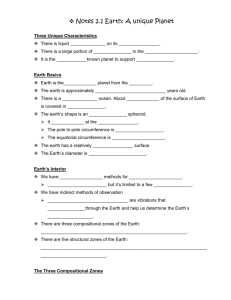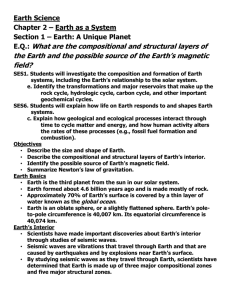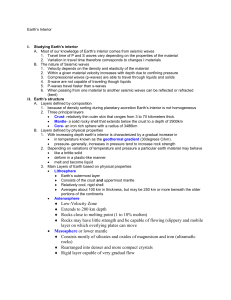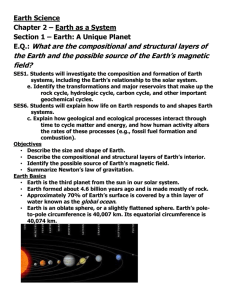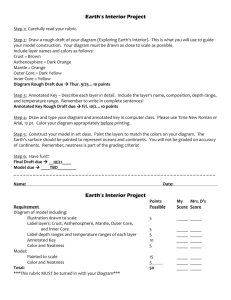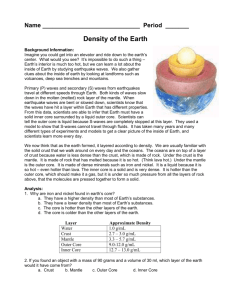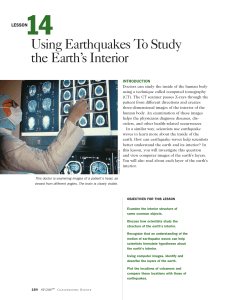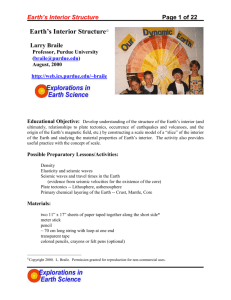Earth as a System notes 2
advertisement
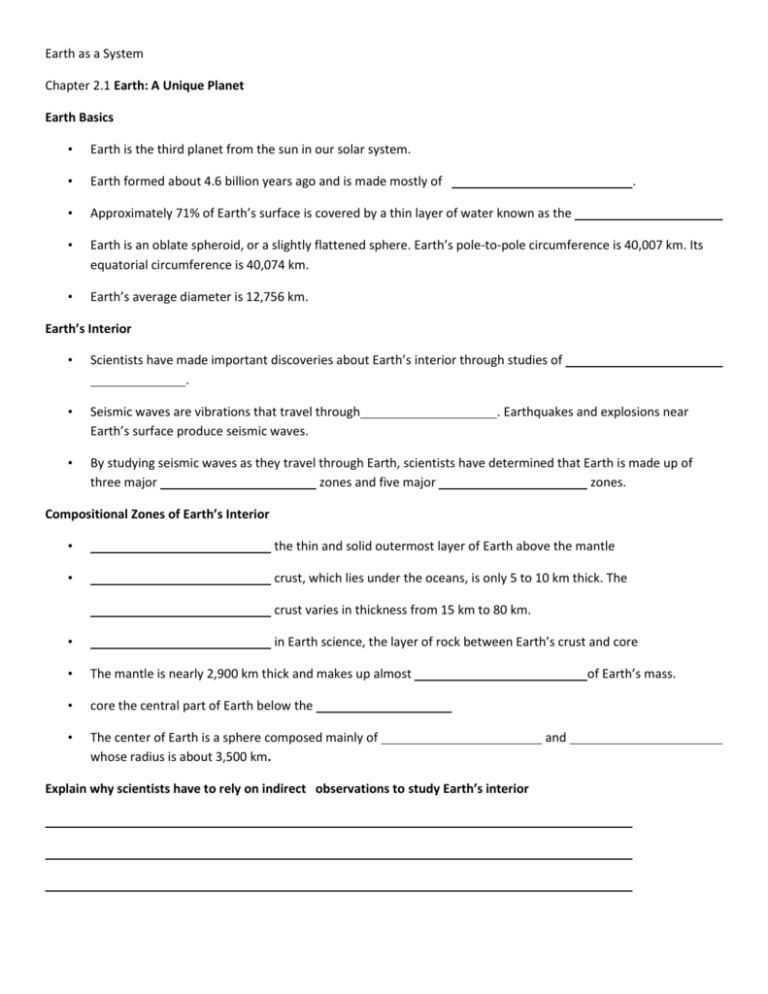
Earth as a System Chapter 2.1 Earth: A Unique Planet Earth Basics • Earth is the third planet from the sun in our solar system. • Earth formed about 4.6 billion years ago and is made mostly of • Approximately 71% of Earth’s surface is covered by a thin layer of water known as the • Earth is an oblate spheroid, or a slightly flattened sphere. Earth’s pole-to-pole circumference is 40,007 km. Its equatorial circumference is 40,074 km. • Earth’s average diameter is 12,756 km. . Earth’s Interior • Scientists have made important discoveries about Earth’s interior through studies of . • Seismic waves are vibrations that travel through Earth’s surface produce seismic waves. • By studying seismic waves as they travel through Earth, scientists have determined that Earth is made up of three major zones and five major zones. . Earthquakes and explosions near Compositional Zones of Earth’s Interior • the thin and solid outermost layer of Earth above the mantle • crust, which lies under the oceans, is only 5 to 10 km thick. The crust varies in thickness from 15 km to 80 km. • in Earth science, the layer of rock between Earth’s crust and core • The mantle is nearly 2,900 km thick and makes up almost • core the central part of Earth below the • The center of Earth is a sphere composed mainly of whose radius is about 3,500 km. Explain why scientists have to rely on indirect observations to study Earth’s interior of Earth’s mass. and Structural Zones of Earth’s Interior • The three compositional zones of Earth’s interior are divided into zones. • structural the solid, outer layer of Earth that consists of the crust and the rigid upper part of the mantle • The rigid lithosphere is 15 to 300 km thick. • the solid, plastic layer of the mantle beneath the lithosphere; made of mantle rock that flows very slowly, which allows tectonic plates to move on top of it • The plastic asthenosphere is about 200 to 250 km thick. • literally, the “middle sphere”; the strong, lower part of the mantle between the asthenosphere and the outer core • The mesosphere reaches from the bottom of the asthenosphere to a depth of about 2,900 km. • Below the mesosphere is the outer core. • The outer core surrounds the inner core, which begins at a depth of 5,150 km. Earth as a Magnet • Earth’s magnetic field extends beyond the atmosphere and affects a region of space called the magnetosphere. • Scientists think that motions within the liquid iron of Earth’s outer core produce that in turn create Earth’s magnetic field. Earth’s Gravity • Gravity is the force of attraction that exists between all in the universe. • According to Newton’s law of gravitation, the force of attraction between any two objects depends on the of the objects and the between the objects. • The larger the masses of two objects and the closer together that the two objects are, the the force of gravity between the objects will be. Weight and Mass • Weight is a measure of the strength of the pull of • An object’s weight depends on its mass and its distance from Earth’s on an object. . Weight and Location Because the distance between Earth’s surface and its center is greater at the than at the , the weight of an object at the equator is about 0.3% less than its weight at the North Pole.
